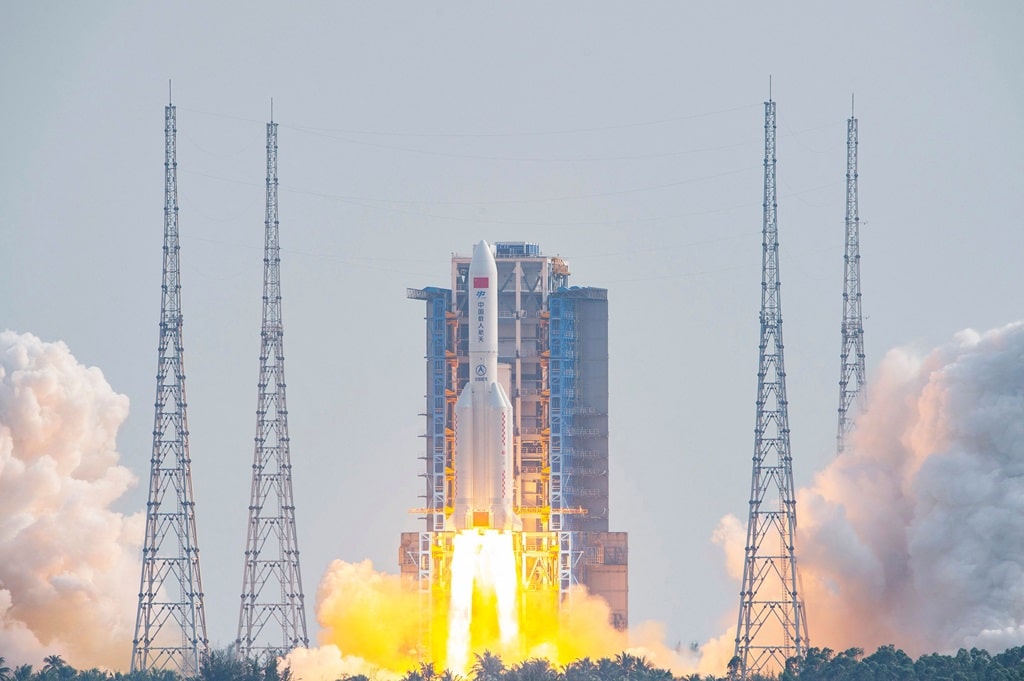Science
China Launches Long March-5 to the “Dark Side of Moon”

China has launched an unmanned spacecraft on a nearly two-month journey to gather rocks and soil from the moon’s far side, becoming the first country to undertake such an ambitious task.
China’s heaviest rocket, the Long March-5, lifted off at 5:27 p.m. Beijing time (0927 GMT) from the Wenchang Space Launch Center on the southern island of Hainan, carrying the Chang’e-6 probe weighing more than 8 metric tons.
China’s Chang’e-6 is entrusted with landing in the South Pole-Aitken Basin on the moon’s far side, which is continuously facing away from Earth, and retrieving and returning samples.
The launch is another significant milestone in China’s lunar and space exploration mission.
“It is a bit of a mystery to us how China has been able to develop such an ambitious and successful programme in such a short time,” said Pierre-Yves Meslin, a French researcher working on one of the Chang’e-6 mission’s scientific objectives.
In 2018, Chang’e-4 made China’s first unmanned moon landing on the far side. Chang’e-5 returned lunar samples for the first time in 44 years in 2020, and Chang’e-6 has the potential to make China the first country to retrieve samples from the moon’s “hidden” side.
Scientists, diplomats, and space agency officials from France, Italy, Pakistan, and the European Space Agency all attended the launch, which carried moon-study payloads on Chang’e-6.
However, no US groups requested for a payload place, according to Ge Ping, deputy director of the China National Space Administration’s (CNSA) Lunar Exploration and Space Program.
U.S. law prohibits China from collaborating with the United States’ space agency, NASA.
The Dark Side of the Moon
The far side of the moon, also known as the “dark side of the moon” despite receiving sunlight, is the hemisphere that always faces away from Earth. The Soviet Luna 3 spacecraft made the first observation of this strange region in 1959.
Unlike the near side, the far side lacks enormous, dark basins known as marias. Instead, hundreds of craters produced by asteroid collisions over billions of years blanket it.
The South Pole-Aitken Basin, an immense crater more than 1,500 miles wide and several miles deep, is one of the most visible landforms on the far side. This ancient impact basin is among the largest known crater formations in our solar system. The far side likewise has many mountains, ridges, and other harsh topography formed by cosmic collisions.
Studying the far side provides insights into the moon’s genesis and early history because it maintains impact records from the solar system’s turbulent childhood.
Scientists also intend to investigate it for potential resources and future lunar bases. With no atmosphere or magnetic field, the far side displays the wounds of endless meteor bombardments, exposing information about Earth’s only natural satellite that the near side lacks.
Source: Reuters
Apple Boss Tim Cook Makes Surprise China Visit








































